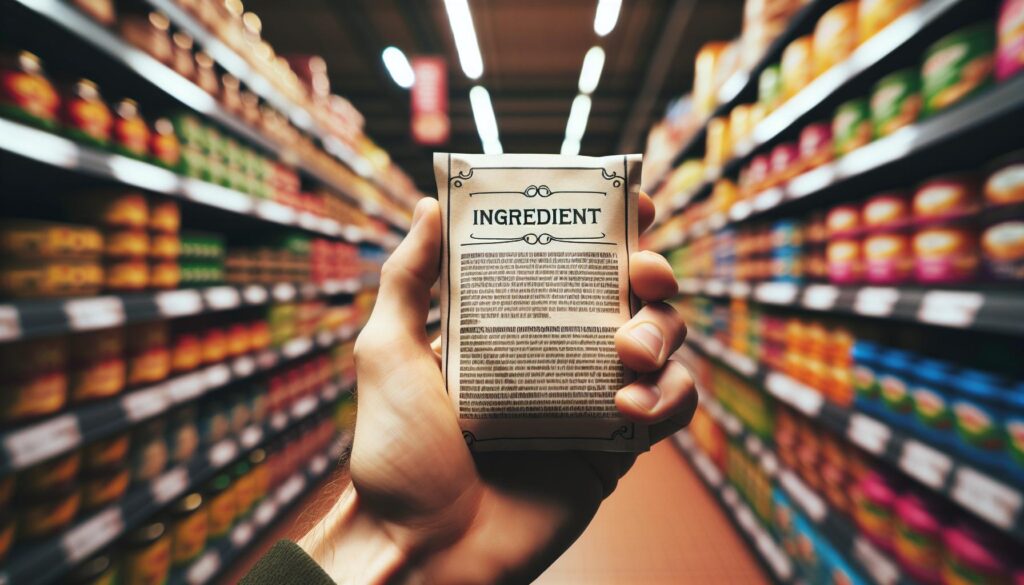Navigating a milk allergy can feel overwhelming, especially when shopping for groceries. With so many products on the shelves, it’s crucial to know what to avoid. This guide will help you identify common milk-derived ingredients, read labels effectively, and make informed choices, ensuring you stay safe while enjoying your favorite foods. Let’s dive in!
Table Of Contents
- Understanding Milk Allergies
- Common Milk-Derived Ingredients to Avoid
- How to Read Food Labels for Milk Allergens
- Supermarket Shopping Tips for Milk Allergy Management
- Trusted Resources and Tools for Milk Allergy Management
- Practical Advice for Families Managing Milk Allergies
- Conclusion
- Related Posts
- Frequently Asked Questions (FAQs)
- Sources
Key Takeaways
- Understanding the difference between a milk allergy and lactose intolerance is crucial for proper management and treatment.
- Always read food labels carefully, looking for both obvious and hidden milk-derived ingredients to avoid allergic reactions.
- Familiarize yourself with the Food Allergen Labeling and Consumer Protection Act (FALCPA) to better navigate food packaging and allergen disclosures.
- Explore safe food alternatives, such as plant-based milk options, to maintain a balanced diet while avoiding milk allergens.
- Educate and empower children with milk allergies to make safe food choices, fostering independence and confidence in their dietary management.
Understanding Milk Allergies
What is a Milk Allergy?
A milk allergy is a type of food allergy where your immune system reacts negatively to proteins found in milk, most commonly casein and whey. Unlike lactose intolerance, which is a digestive issue, a milk allergy can trigger serious immune responses, including hives, swelling, or even anaphylaxis. It’s one of the most common food allergies, especially in children, though some adults experience it too.
If you’re managing a milk allergy, tools like Food Scan Genius can help you identify hidden milk ingredients in products. Their platform simplifies label reading and ensures you avoid risky items while shopping.
Symptoms and Diagnosis of Milk Allergies
Milk allergy symptoms can vary from mild to severe. Common signs include skin reactions like rashes or hives, stomach issues such as cramps or vomiting, and respiratory problems like wheezing. In severe cases, exposure to milk proteins can lead to anaphylaxis, a life-threatening reaction requiring immediate medical attention.
Diagnosing a milk allergy typically involves a combination of medical history, skin prick tests, and blood tests. Your doctor may also recommend an elimination diet to confirm the allergy. For more detailed guidance, check out resources like the Cleveland Clinic’s milk allergy page or Johns Hopkins Medicine.
Understanding your symptoms and getting a proper diagnosis is the first step toward managing a milk allergy effectively. With the right tools and knowledge, like those offered by Food Scan Genius, you can confidently navigate your dietary restrictions and make safe choices.
Common Milk-Derived Ingredients to Avoid
Major Milk Ingredients Found in Products
When managing a milk allergy, it’s essential to recognize the obvious culprits. Ingredients like milk, cream, butter, cheese, and yogurt are straightforward to spot. However, milk proteins such as casein and whey are also common in many products, including baked goods, protein powders, and even some candies.
To make shopping easier, tools like Food Scan Genius can help you quickly identify these ingredients. Their platform scans product labels and flags milk-derived components, saving you time and stress.
For a deeper dive into ingredient transparency, check out this guide to understand what’s really in your food.
Hidden Milk Ingredients in Processed Foods
Milk-derived ingredients often hide under less obvious names in processed foods. Terms like “lactose,” “caseinate,” “ghee,” and “hydrolyzed whey protein” can indicate the presence of milk. Additionally, processed meats, salad dressings, and even some non-dairy creamers may contain milk derivatives.
Reading labels carefully is crucial, but it can be overwhelming. That’s where Food Scan Genius comes in handy. Their database helps you uncover hidden milk ingredients in everyday products, ensuring you avoid accidental exposure.
For more tips on identifying hidden allergens, explore this resource. With the right knowledge and tools, you can confidently navigate the supermarket and keep your diet safe.
How to Read Food Labels for Milk Allergens

Understanding the Food Allergen Labeling and Consumer Protection Act (FALCPA)
The Food Allergen Labeling and Consumer Protection Act (FALCPA) is a game-changer for anyone managing food allergies. This law requires manufacturers to clearly label the presence of major allergens, including milk, on packaged foods. If a product contains milk or milk-derived ingredients, it must be listed in plain language, either in the ingredient list or in a “Contains” statement.
For example, a product might say “Contains: Milk” or list ingredients like “casein (milk)” to make it clear. This transparency helps you make safer choices while shopping. Tools like Food Scan Genius can further simplify this process by scanning labels and identifying allergens for you.
Tips for Identifying Milk Ingredients on Labels
Even with FALCPA, milk ingredients can sometimes be tricky to spot. Look out for terms like “whey,” “casein,” “lactose,” and “milk solids.” Some less obvious culprits include “nougat,” “ghee,” and “hydrolyzed protein.” Always double-check labels, especially on processed foods, as recipes can change without notice.
To make this easier, consider using Food Scan Genius. Their platform helps you decode complex ingredient lists and flags hidden milk allergens. For additional guidance, explore this resource to deepen your understanding of food allergens.
By staying vigilant and using the right tools, you can confidently navigate food labels and avoid milk allergens, ensuring your safety and peace of mind.
Supermarket Shopping Tips for Milk Allergy Management
Safe Food Alternatives for Milk Allergies
Finding safe alternatives is key when managing a milk allergy. Thankfully, there are plenty of options available. Look for plant-based milk like almond, soy, oat, or coconut milk. Vegan butter, cheese, and yogurt are also great substitutes. Many brands now offer dairy-free versions of popular products, making it easier to enjoy your favorite foods without the risk.
To simplify your search, Food Scan Genius can help you identify safe alternatives. Their platform scans product labels and highlights options that are free from milk allergens. For more insights, check out this guide on vegan ingredients.
Avoiding Cross-Contamination Risks in Supermarkets
Cross-contamination is a hidden danger for those with milk allergies. Shared equipment or storage areas can lead to trace amounts of milk in otherwise safe products. To minimize risks, stick to certified allergen-free brands and avoid bulk bins where cross-contact is more likely.
When shopping, always check for allergen warnings like “may contain milk” or “processed in a facility with milk.” Tools like Food Scan Genius can flag these warnings for you, ensuring you make informed choices. For additional tips, explore this resource.
By choosing safe alternatives and staying vigilant about cross-contamination, you can shop confidently and keep your diet free from milk allergens. With the right tools and knowledge, managing a milk allergy becomes much more manageable.
Trusted Resources and Tools for Milk Allergy Management

FDA Guidance and Educational Materials
The FDA provides essential resources to help individuals manage food allergies, including milk allergies. Their guidelines, such as the Food Allergen Labeling and Consumer Protection Act (FALCPA), ensure that allergens are clearly labeled on food products. They also offer educational materials on safe food handling and allergen awareness, which are invaluable for anyone navigating a milk allergy.
For a more personalized approach, Home – Food Scan Genius is an excellent tool. It simplifies label reading and helps you identify milk allergens in products, making your shopping experience safer and stress-free. For additional FDA resources, visit their official website.
Specialist Support and Online Tools
Managing a milk allergy often requires expert advice. Consulting with an allergist or dietitian can provide tailored guidance on avoiding allergens and maintaining a balanced diet. Many healthcare providers also offer online portals and tools to track symptoms and manage your allergy effectively.
Online platforms like Food Scan Genius go a step further by offering a comprehensive database of food products. This tool helps you uncover hidden milk ingredients and make informed choices. For more insights, explore this guide.
By leveraging trusted resources like the FDA and innovative tools like Food Scan Genius, you can confidently manage your milk allergy and enjoy a safer, healthier lifestyle.
Practical Advice for Families Managing Milk Allergies
Meal Planning and Cooking Tips
Meal planning is a lifesaver when managing milk allergies. Start by creating a weekly menu with safe, dairy-free recipes. Focus on whole foods like fruits, vegetables, grains, and proteins that are naturally free of milk. Use plant-based alternatives like almond milk, coconut yogurt, and vegan cheese to recreate your favorite dishes without the risk.
When cooking, always double-check ingredient labels to ensure no hidden milk-derived components sneak in. Tools like Food Scan Genius can help you identify safe ingredients and avoid allergens. For more inspiration, explore this guide on vegan ingredients that work well in dairy-free cooking.
Empowering Children with Milk Allergies
Helping children understand and manage their milk allergy is crucial for their safety and confidence. Teach them how to read food labels and recognize terms that indicate milk. Role-play scenarios where they might need to ask about ingredients, like at a friend’s house or a restaurant.
Make it fun by involving them in meal prep and showing them how delicious dairy-free options can be. Tools like Food Scan Genius can also empower kids by making it easier to identify safe foods. For additional tips, check out this resource.
By planning meals carefully and teaching children to advocate for themselves, families can navigate milk allergies with confidence and ease. With the right tools and a proactive approach, managing a milk allergy becomes a shared journey toward health and safety.
Conclusion
Managing a milk allergy doesn’t have to feel like navigating a minefield. By understanding the nature of milk allergies, identifying common and hidden milk-derived ingredients, and mastering the art of reading food labels, you can shop with confidence and keep your meals safe and enjoyable. Remember, knowledge is your best ally when it comes to making informed choices.
We’ve covered the essentials: recognizing milk allergens, avoiding cross-contamination, and finding safe alternatives. But let’s face it—reading every label and researching every product can be time-consuming and stressful. That’s where technology can lend a helping hand. Enter Food Scan Genius, the world’s best AI assistant for shoppers with food allergies and dietary restrictions. This app simplifies your shopping experience by scanning product labels and instantly identifying allergens, saving you time and worry. It’s like having a personal food safety expert in your pocket!
So, what’s next? Start putting these tips into practice during your next grocery trip. And if you’re ready to take the guesswork out of shopping, download the Food Scan Genius app today—available on both Google Play and the Apple App Store. With the right tools and knowledge, you can confidently manage your milk allergy and focus on living your best, healthiest life. You’ve got this!
Related Posts
- Understanding Vegetarian Labels in Food Products
- Discover Vegetarian Ingredients in Snacks Today
- Emerging Culprits in the World of Food Allergies – Food Scan Genius
- Navigating Milk Allergies while you shop: A Comprehensive Guide – Food Scan Genius
Frequently Asked Questions (FAQs)
What are the common symptoms of a milk allergy?
Common symptoms of a milk allergy can include skin reactions like hives or rashes, gastrointestinal issues such as stomach cramps or vomiting, and respiratory problems like wheezing or difficulty breathing. In severe cases, exposure to milk can lead to anaphylaxis, which is a life-threatening reaction requiring immediate medical attention.
How can I identify hidden milk ingredients in processed foods?
Hidden milk ingredients can often be found under less obvious names, such as casein, whey, lactose, and ghee. Always read ingredient labels carefully, and look for allergen warnings like “may contain milk.” Tools like Food Scan Genius can help you identify these hidden ingredients quickly.
Are there safe alternatives to dairy products for those with a milk allergy?
Yes! There are many safe alternatives to dairy products for individuals with a milk allergy. Plant-based options like almond milk, soy milk, coconut yogurt, and vegan cheese are widely available. These alternatives can be used in cooking and baking to replace traditional dairy products without compromising flavor.
How can I ensure my child understands their milk allergy?
Empowering your child to understand their milk allergy is crucial. Teach them how to read food labels and recognize terms that indicate milk. Role-playing scenarios where they might need to ask about ingredients can also help. Involving them in meal prep can make learning about safe foods fun and engaging.
What should I do if I accidentally consume a product containing milk?
If you accidentally consume a product containing milk and experience symptoms, it’s essential to stay calm. Monitor your symptoms closely. If they are mild, you may just need to rest and hydrate. However, if you experience severe symptoms like difficulty breathing or swelling, seek emergency medical help immediately. Always have an emergency plan in place, including carrying an epinephrine auto-injector if prescribed.





